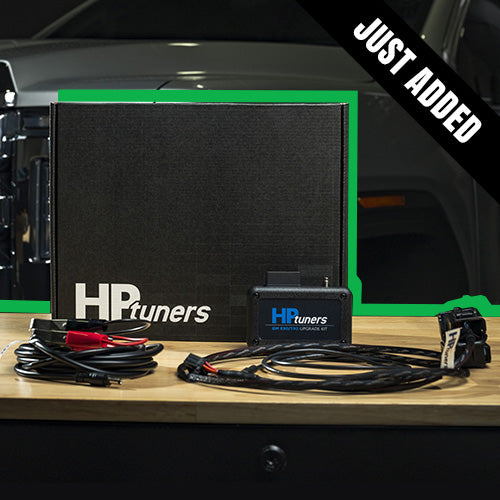

Bulletproofing – It’s Not Just for 6.0 Power Strokes Anymore
If you’ve been around diesel trucks for any length of time, you’ve probably heard the term “bulletproofing.” The term itself became all the rage when the aftermarket figured out that Ford’s 6.0 could be a great engine IF Ford had done just a handful of things to it before sending it to the dealerships. All it really needed were stronger head studs, a more reliable oil cooler, a higher-quality water pump, and maybe an upgraded FICM (fuel injection control module). But in the end, the accountants won the argument in Dearborn.
There’s some arguments as to who gets to say they figured it all out, but that’s when most of us began using the term.
The bigger point is that now that many 6.0 Power Strokes are either broken or bulletproofed, most diesel owners think in terms of correcting any potential issues with any diesel engine as “bulletproofing.”
So what does that term actually mean today? We’ve looked at the most popular items our customers are buying to try to draw some conclusions about the smartest moves to make to “bulletproof” your 6.4L (2008-2010) and 6.7L (2011-2016) Power Stroke engines.

Key Areas to Bulletproof
1. Head Studs & Gaskets
Stock torque-to-yield head bolts on both the 6.4L and early 6.7L Power Stroke can stretch under high boost or towing loads, leading to blown head gaskets. Upgrading to ARP head studs helps secure the heads and prevent costly failures. While we’ve never liked torque-to-yield, for a lot of applications, they’re fine. If you’re pushing boost levels or hauling heavy, though, head studs are cheap insurance, especially if you’re just starting to build up an engine, or just bought a used Power Stroke.

2. EGR & Oil Cooler Upgrades
Both the 6.4L and 6.7L Power Stroke engines use an EGR (Exhaust Gas Recirculation) system, and it’s a known weak point:
- The 6.4L EGR cooler has a tendency to crack, leading to coolant leaks and engine damage.
- The 6.7L EGR system, while improved, can still lead to carbon buildup and clogging over time.
- And no, you don’t have to automatically delete the EGR, especially since it’s illegal in so many places. What you can do, though, is make sure it’s working properly. The factory oil cooler is WAY bigger concern and common failure point, especially on the 6.4L. Clogged passages can lead to overheating and engine damage. Installing a high-flow replacement cooler helps regulate engine temperature and extends engine life.

3. Fuel System Reinforcements
The 6.4L Power Stroke uses a Siemens fuel system, while the 6.7L (2011-2016) comes equipped with the dreaded CP4 high-pressure fuel pump—a known failure point. If the CP4 pump grenades, it can send metal shavings through the entire fuel system, destroying injectors and leading to a $10,000+ repair bill. (We’ve seen those bills go as high as $13,000 at the stealership!)
How to protect your fuel system:
- Upgrade to an aftermarket lift pump (like FASS or AirDog) to ensure consistent fuel pressure and filter out contaminants before they reach the injection pump.
- Retrofitting the older and WAYYYYY better CP3 Injection Pump on the 6.7L is the easiest way to keep a pump failure from wrecking the entire fuel system.
- Regularly change fuel filters and use high-quality diesel additives to protect your injectors.

4. Turbo & Intercooler Upgrades
Both the 6.4L and early 6.7L Power Stroke turbos have their fair share of issues:
- The 6.4L came with a compound turbo system, which makes great power but is prone to bearing failures and leaking seals.
- The early 6.7L Power Stroke used a single-sequential turbo that can experience VGT (Variable Geometry Turbo) actuator failures.
- If you’re planning to tow or tune your truck, upgrading to a higher-quality turbocharger (such as a ATS Aurora or a drop-in Garrett upgrade) helps improve reliability and lower exhaust gas temperatures (EGTs).
- Also, replacing restrictive factory intercooler piping with higher-flow aluminum or silicone boots prevents boost leaks and keeps intake temperatures down.

5. Transmission Reinforcements
While not technically part of the engine, Ford’s TorqShift transmissions in these trucks can struggle under high horsepower and torque loads. If you’re increasing power, consider:
- A higher-capacity transmission cooler to prevent overheating.
- A tuned valve body and upgraded torque converter to handle extra torque.
- Regular transmission fluid changes with the correct Mercon LV fluid.

Should You Bulletproof Your Power Stroke?
Not every 6.4L or 6.7L Power Stroke needs extensive upgrades right away. But if you:
- Tow heavy loads frequently
- Run aftermarket tuning or performance mods
- Know you’ve got some weak points (like the CP4 pump or a flimsy oil cooler)
- Plan to keep your truck for 350,000+ miles
...then bulletproofing is a smart investment.
Final Thoughts: Preventative Maintenance Pays Off
The 6.4L and 6.7L Power Stroke engines are some of the most powerful and capable diesel engines Ford has built—but neglecting their known issues can lead to expensive repairs. Bulletproofing key components ensures reliability, maximizes performance, and keeps your truck running strong for years to come.
If you're ready to bulletproof your Power Stroke, check out Alligator Performance for a full lineup of head studs, fuel system upgrades, cooling solutions, and turbo kits to keep your truck running at its best!
Learn More
Was this article helpful? Pass it on
- Choosing a selection results in a full page refresh.
!









